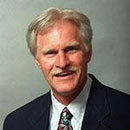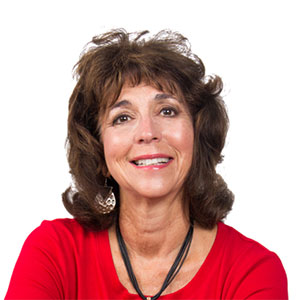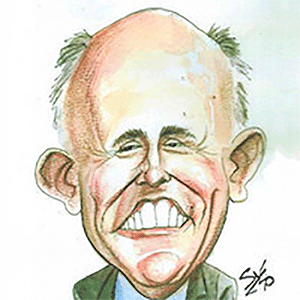This couple said no to aging in place, selling everything they owned to travel
Published in Senior Living Features
MINNEAPOLIS -- While millions of baby boomers are retrofitting their houses with bathtub grab bars and wheelchair ramps in an effort to age in place, one Minnesota couple is doing away with that conventional concept altogether.
Scott and Kate Carlson sold nearly everything they own, including their home in Eden Prairie, in preparation for the next phase of their life as full-time digital roamers with no permanent address.
“Instead of rinse and repeat of the same, our base camp is going to be each other and wherever we happen to be,” Scott Carlson said. “We’re venturing out into something that’s a little less known.”
Nearly 80% of older American homeowners plan to stay in their current home as long as they can, according to a new report from Redfin. Chief economist Daryl Fairweather said most of those people are choosing to age in place because it makes financial sense. But the Carlsons are proving building equity through firmly planted roots isn’t the only path.
They’ll live and work around the world, spending several months renting in whatever locale suits them best at that time. In early January, they’ll settle into a beachside vacation rental on Oahu, Hawaii, with its extra bedroom serving as an office or guest room.
“Given the four-hour time difference, we will have our afternoons free to hit the beach or explore the island,” said Scott Carlson, a self-employed business consultant who formerly worked for Best Buy.
After the island life, they’ll spend time with each of their four kids scattered around the country. Come summer, they’ll base near mountain trails and national parks out West. For as many years as their health holds out, they’ll hop from one destination to the next, one two-bedroom, three-month rental at a time.
The Carlsons (she’s 57, a Gen Xer; he’s 61, a boomer) are both still a few years from retirement age but are at a sweet spot in their lives: still young enough to work, kids out on their own. They know it won’t last forever, so they seized the opportunity to reinvent their lives.
“We always thought it would happen in retirement, but with these jobs, we don’t have to,” Kate Carlson said. “We don’t have to wait another seven years.”
The pandemic and the ability to work remotely accelerated that idea. In the midst of the pandemic, Kate Carlson, an occupational therapist who worked hands-on with patients, also experienced a sudden health crisis that upended her active lifestyle.
“It was a realization that life can change so fast, so let’s grab it while we can,” Kate Carlson said.
She shifted away from direct patient care and is now totally remote reviewing charts for a health care company. She and her husband aren’t independently wealthy, nor do they have a trust fund. So their nomadic existence came down to an elaborate spreadsheet Scott Carlson masterminded. The tradeoff: selling their house and most of their belongings.
“We had to make a choice,” Kate said. “We either step away from the house and do this or stay here.”
Through the 24 years they had owned the house, they’ve accumulated significant equity that they’ll invest to help fund their adventures. The savings on other costs of homeownership — maintenance, property taxes, etc. — will help as well.
Their rental budget is about $3,000 per month, though some splurge-worthy locations will cost more, others less. Monthly rather than nightly rentals will save them a bundle, offering discounts of as much as $1,000 per month.
“Economically, it’s not crazy when you do the math,” Scott Carlson said.
Since the internet is critical to their work, they’ll sign up for a satellite-based mobile plan. Their new permanent address will be a local Mail Boxes Etc. location, which will forward their mail as needed. They’re still consulting with their accountant about the tax situation, but they know they’ll have to keep careful track of how much income they’ve earned in each place they “live.” And they’ll combine visits to their doctors with twice-yearly visits to friends and family in the Twin Cities.
Last year, an MBO Partners study found more than 17 million American workers described themselves as digital nomads, a 2% annual increase and a staggering 131% increase from pre-pandemic levels. The Carlsons are part of a tiny but growing cohort of remote workers known as the Silver Nomads: a pool of Gen Xers and baby boomers who accounted for 42% of all digital nomads as of last year, up from 36% in 2022.
These digital nomads have become a mainstream demographic that’s transforming the traditional employment system and influencing policy as a growing number of countries create special digital nomad visas and remove some of the red tape that’s made it difficult for digital nomads to work temporarily in foreign countries.
The vacation rental business is also evolving. Midterm vacation rentals that used to cater primarily to traveling nurses on three- to nine-month assignments are on the rise, forcing a growing number of traditional short-term rental sites to offer stays of 90 days or more. In a sign of just how eager people are to work remotely, when Airbnb announced plans to let a dozen people live and work anywhere for a year in the midst of the pandemic, more than 300,000 people applied.
Still, most boomers are looking for ways to stay put. Or, for another growing segment of the aging population, the goal is to move closer to their grown children and grandchildren.
For the Carlsons, the nomadic approach offered them a better opportunity for quality time with their kids than if they’d resettled in just one place.
They’re deliberately scheduling some of their stays in areas that align with the recreational interests of their kids as well as in areas that are close to their kids’ homes. That should make visits more regular, along with always having an extra bedroom in their rental.
“We’ll probably see our kids more than now,” Scott Carlson said. “It’s not running away from them, but finding a different way to engage.”
The Carlsons did have to make some painful decisions, though. Kate Carlson said after more than 50 trips to donation centers and to friends’ and family’s homes, they’ve given away all but about 5% of their belongings, which will fit into about 10 bins they’ll store at her sister’s house in the Twin Cities.
It was easy, she said, to offload their dining table and furnishings, which were mostly gifts from relatives. Rather than pay to store that stuff, they decided furniture like that would be easy enough to buy new if they ever settle in one place again.
Cherished family photos have been harder to purge, Kate Carlson said, but they’ve uploaded all of those to a cloud-based server that gives their whole family access to them anytime. It was most challenging to say goodbye to the trinkets and cards their kids made them, she said.
“I took pics to keep of some items and wished them well and thanked each item for the cherished memories they gave me before tossing them,” she said.
With just a couple of months until the closing on their house, the closets are now empty, and all that’s left in their 4,300-square-foot home is a sofa, bed and a few office supplies. Kate said she’s feeling lighter already and has no regrets. Scott compared their relinquishing of objects to the scales of justice.
“On one side, you have stuff; on the other side, freedom,” he said. “The more you have of one, the less you have of the other.”
















Comments